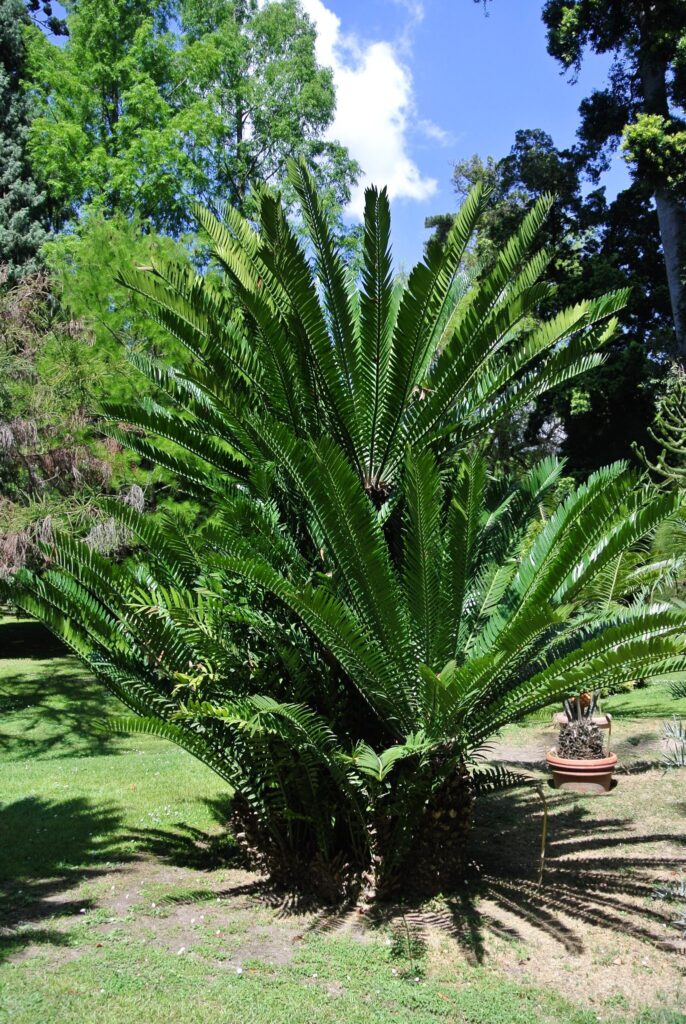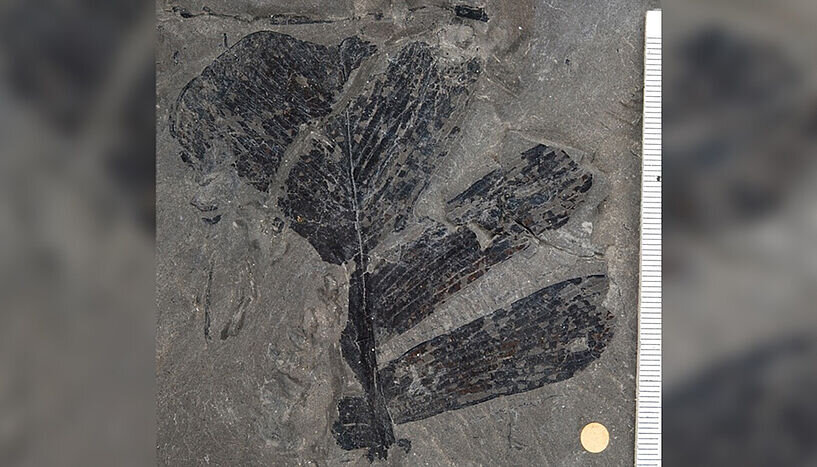@WFS,World Fossil Society, Athira, Riffin T Sajeev,Russel T Sajeev

The African cycad Encephalartos altensteinii Lehm is widely cultivated in botanical gardens around Europe (like this one in the Botanical Garden of the University of Naples “Federico II”), including one specimen that was brought from South Africa to the UK in 1775 and that is still alive today. Large Encephalartos are highly prized as ornamental plants, and unfortunately many species have been brought to the brink of extinction by poaching. Credit: Mario Coiro
Paleobotanist Mario Coiro of the Institute of Paleontology at the University of Vienna and colleagues at the University of Montpellier (France) have made an important breakthrough in understanding the origin and geographic distribution of cycads. By combining genetic data with leaf morphological data from both fossil and living species for the first time, the researchers created a phylogenetic tree of these fascinating and endangered plants. The results of the study have now been published in the journal New Phytologist.
Cycads (order Cycadales) are an evolutionarily very old and once very diverse group of palm-like plants that were widespread worldwide at the time of the dinosaurs. Now their distribution is limited to subtropical regions of the Earth with low latitudes, and some of them have been considered as “living fossils.”
Until now, little was known about the origin of these plants, which are also highly valued by garden lovers and collectors, and their evolutionary distribution paths—a fact that Coiro’s team have actively challenged. To this end, they developed an innovative research approach that makes a significant contribution to clarifying the biogeographical distribution of cycads.Modern methods and ancient plants
“We knew from fossil cycad finds that there must have been dramatic changes in their ranges during Earth’s history,” explains paleobiologist Coiro. “So we included leaf morphological data from fossil and living cycad species in our studies and combined them with genetic data from living cycads,” adds co-author Leyla Seyfullah.
The inclusion of the fossils in the study was of immense importance for the successful estimation of the areas of origin of the cycad ancestors and the understanding of the underlying evolutionary processes. Using a special analysis method (“Bayesian total evidence dating”), it was thus possible to create a phylogenetic tree of the cycads, including the fossil finds, and to uncover important information about their origin and biogeography.

A specimen of Ctenis nilsonii (Nath.) Harris, from the Rhaetian of Scania, Sweden. This lineage of cycads lived from the Triassic to the Miocene but did not leave any extant relatives. Credit: Mario CoiroA moving history
The study showed that cycads actually can look back on a dynamic evolutionary distribution history, with some important lineages becoming extinct and others spreading more recently. Geographically, high latitudes of both the Northern and Southern Hemispheres played a major role in the evolution of cycads. During the Carboniferous, cycads originated on the Laurasian landmass, which corresponded to the continents of today’s Northern Hemisphere. During the Jurassic, their distribution extended particularly to Gondwana, a landmass formed by the continents of today’s Southern Hemisphere. Cycads also reached their maximum latitudinal range during this time.
“We were able to demonstrate that Antarctica and Greenland, as well as land links that have already disappeared today, were crucial biogeographical nodes for the distribution of cycads,” explains Coiro. Global climatic cooling during the Neogene (15 million years ago) caused cycads to become extinct in areas of higher latitude, which explains the limitation of their current distribution to the subtropics.
The results of this study offer valuable insights into biodiversity research and also have implications for efforts to conserve recent cycads. “By understanding the historical biogeography of cycads, we gain valuable knowledge into the geographic mode of speciation and about those areas that favor speciation,” Coiro says. “Thus, our work serves as a guide for conservation strategies aimed at preserving these fascinating and endangered plants.”
Journal data: Mario Coiro et al, Reconciling fossils with phylogenies reveals the origin and macroevolutionary processes explaining the global cycad biodiversity, New Phytologist (2023). DOI: 10.1111/nph.19010
Source: Report by University Of Vienna in Phys.org.
@WFS,World Fossil Society, Athira, Riffin T Sajeev,Russel T Sajeev



 June 13th, 2023
June 13th, 2023  Riffin
Riffin  Posted in
Posted in  Tags:
Tags: 